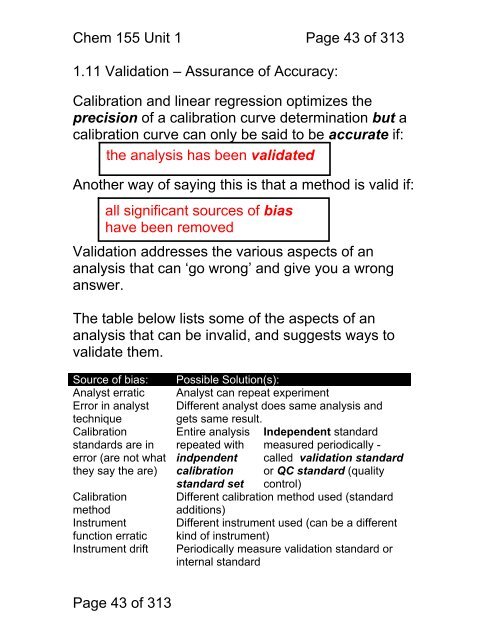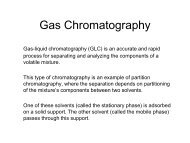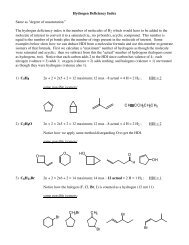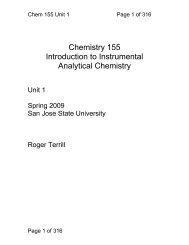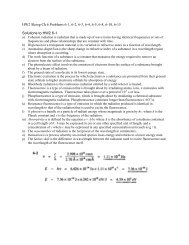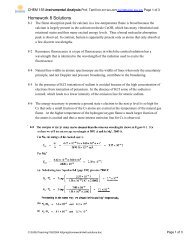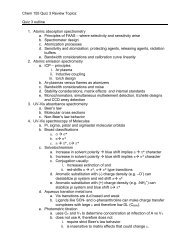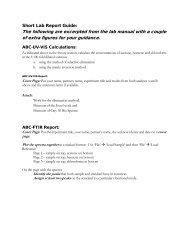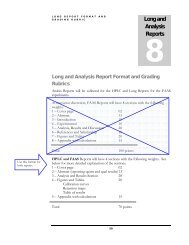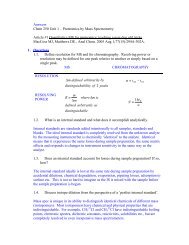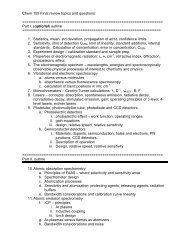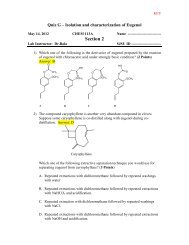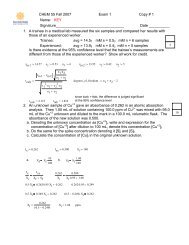Chemistry 155 Introduction to Instrumental Analytical Chemistry
Chemistry 155 Introduction to Instrumental Analytical Chemistry
Chemistry 155 Introduction to Instrumental Analytical Chemistry
You also want an ePaper? Increase the reach of your titles
YUMPU automatically turns print PDFs into web optimized ePapers that Google loves.
Chem <strong>155</strong> Unit 1 Page 43 of 3131.11 Validation – Assurance of Accuracy:Calibration and linear regression optimizes theprecision of a calibration curve determination but acalibration curve can only be said <strong>to</strong> be accurate if:the analysis has been validatedAnother way of saying this is that a method is valid if:all significant sources of biashave been removedValidation addresses the various aspects of ananalysis that can ‘go wrong’ and give you a wronganswer.The table below lists some of the aspects of ananalysis that can be invalid, and suggests ways <strong>to</strong>validate them.Source of bias:Analyst erraticError in analysttechniqueCalibrationstandards are inerror (are not whatthey say the are)CalibrationmethodInstrumentfunction erraticInstrument driftPossible Solution(s):Analyst can repeat experimentDifferent analyst does same analysis andgets same result.Entire analysis Independent standardrepeated with measured periodically -indpendent called validation standardcalibration or QC standard (qualitystandard set control)Different calibration method used (standardadditions)Different instrument used (can be a differentkind of instrument)Periodically measure validation standard orinternal standardPage 43 of 313


